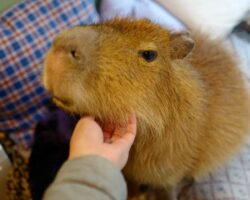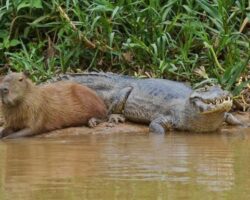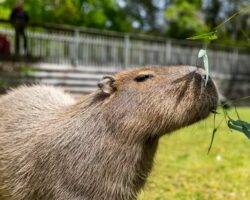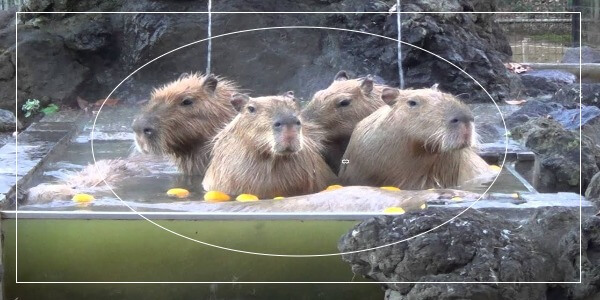One of the most docile and friendliest animals in the wild is the capybara. They are quite fascinating, as they happen to be the biggest rodent in the world.
Capybaras are herbivores, they eat grasses, plants, and vegetation and do not prey on other animals for meat, despite having a set of long teeth. The capybara is prey to several predators in the wild but is the alligator among its threats?
The capybara seems to have won the hearts of crocodilians and alligators. It is weird that to find the capybara hanging out with Crocs on the riverbank.
Large animals like the capybara are a big meal for any predator. The capybara weighs around 100 pounds and some weigh up to 140 to 150 pounds. It is strange that alligators don’t attack capybaras for food.
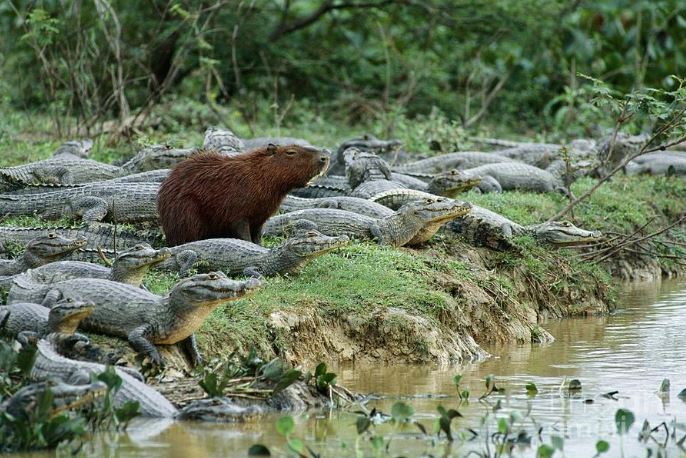
You may have heard about how threatening the alligator is and you are puzzled to know why the alligator shies from eating the capybara. Well, there are several reasons why the alligator doesn’t eat these water pigs. Many report that the capybara is too large for the reptile to swallow.
Crocodilians don’t chew their food because they have no molars to crush their meals, so they swallow their prey in small parts. The large size of the capybara will be a challenge for any alligator to swallow. Rather than struggling to eat a capybara, the alligator will wait for another meal.
Also, capybaras are one of the most social and happiest creatures in the animal kingdom. They are typically at peace with almost every animal out there, including crocodiles, monkeys, birds, cats, dogs, and even human beings.
As a semi-aquatic animal, it is common to see the capybara bathing or chilling in pounds and water pools. Crocodilians are also semiaquatic like the capybara. Both animals typically meet each other along riverbanks and streams in the wild.
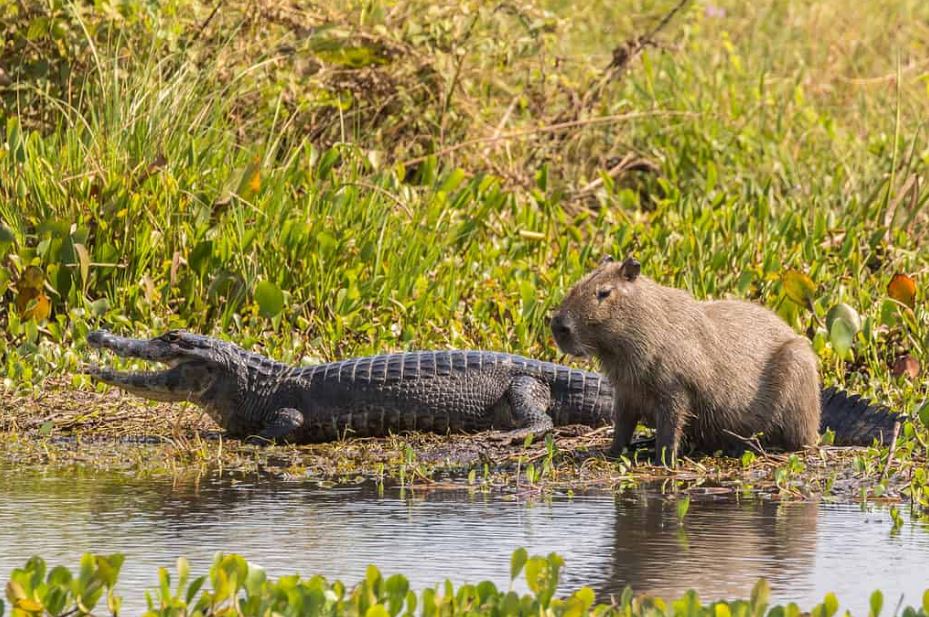
The capybara appears unperturbed even when surrounded by lots of alligators. They socialize with the reptile and can ride on its back when they feel like it.
While the alligator is not a threat to the capybara, there are several animals that will take up the opportunity to feast on the capybara. Snakes, for instance, tend to swallow their prey. They can expand their jaws to allow them to consume meals bigger than themselves.
Their fellow reptiles, alligators, do not have such ability. However, they do have powerful jaws that give them a firm grip over their meal and a mighty crushing power.
Despite being wild animals, capybaras have been domesticated by humans in large numbers in recent years. The capybara is legal in some places around the world and is also kept as a household pet in some parts of the United States.
Now that you know why alligators don’t eat capybara, you may want to know which animal eats the capybara. The capybara has a lot of predators in and outside the wild. It will be interesting to look at the most common ones.
Capybara Predators
1. Caimans
Caimans are threats to the capybara and may actually be the most common predator of the rodent. While multiple species of crocodilians exist, caimans are large reptiles and are very similar to crocodiles and alligators. Caimans are extremely large; some species can grow as much as 20 feet long.
Like the capybara, the caiman is found in South America and they live around freshwater areas such as swamps, rivers, lakes, etc. Caimans are night hunters, they prefer hunting at dusk when their prey is vulnerable and less active.
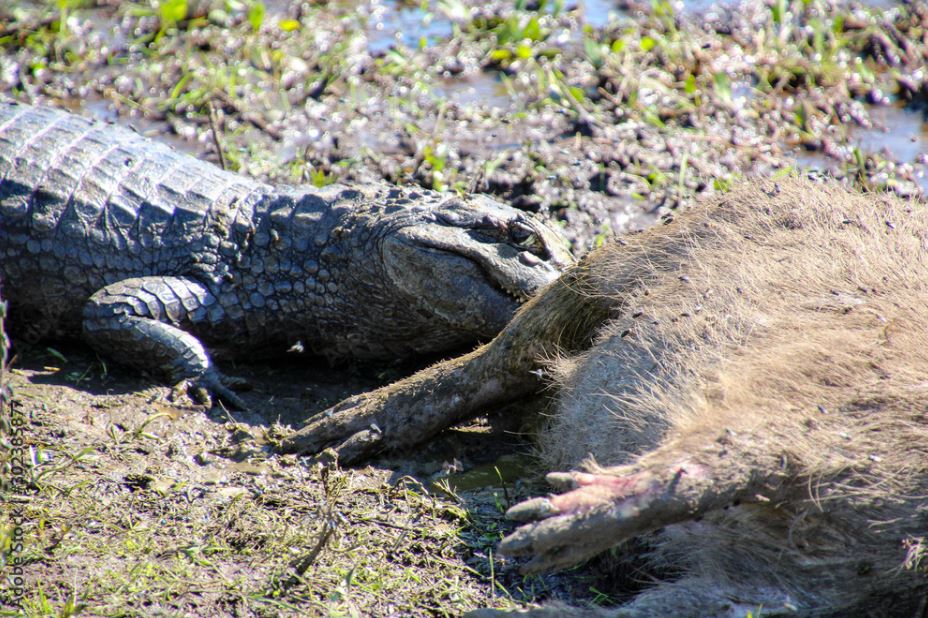
Caimans are excellent and skillful hunters. When they spot their prey, they are quick to launch an attack and grab the meal with their strong jaws. Then, they drag the animal into the water to drown it. They have a set of razor-sharp teeth which is strong enough to eat a full-grown capybara.
While alligators and crocodiles will find it hard to eat the capybara, caimans are strong enough to swallow the giant rodents. Caimans are carnivores and will eat any meal that comes their way. However, their diet consists of birds, reptiles, turtles, fishes, and small mammals like guinea pigs, rabbits, rats, and capybaras.
2. Green Anaconda
Green anacondas are another predator of the capybara. Like caimans and capybaras, they come from South America and tend to stay in tropical rainforests with proximity to water bodies such as swamps and rivers.
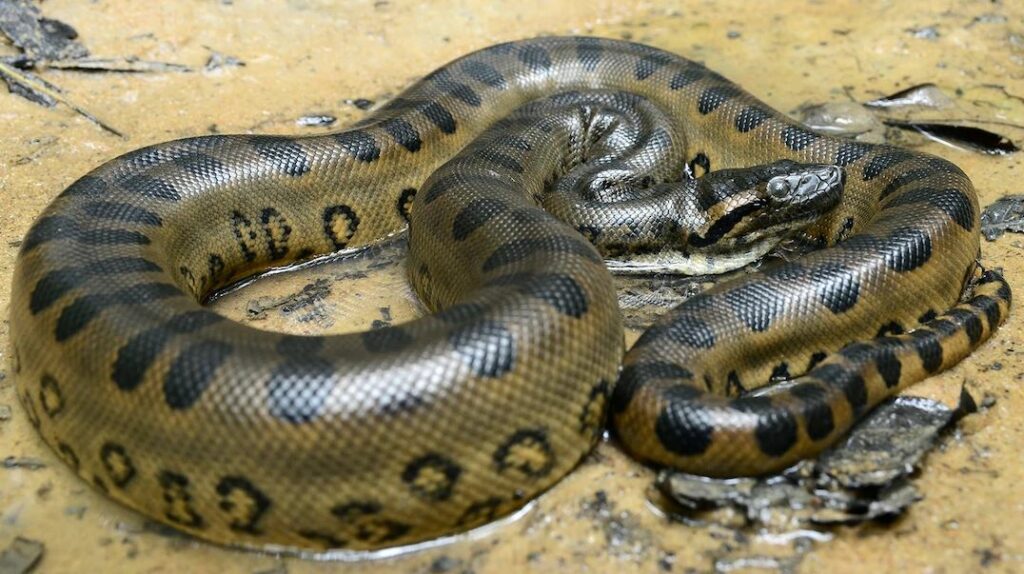
Anacondas are large snakes and can grow as long as 30 feet long. These reptiles hunt at nighttime when their prey is defenseless or less active. What makes the anaconda a common predator of the capybara is that it hunts in water. So even if a capybara gets underwater to hide from predators, the anaconda can find it.
Anacondas are good hunters; they know how to get their prey. When they find an animal to prey on, they go for the animal and grab it with their powerful jaws. Afterward, they coil around the prey to suffocate it.
Anacondas do not chew their prey. Rather, they swallow their prey completely. When swallowed, the meal can take several weeks to digest in the anaconda’s body.
Anacondas have a varied diet and can eat several animals. However, they have a specialized diet made up of fish, reptiles, and mammals.
3. Ocelots

Ocelots are excellent runners, swimmers, and climbers, making them the perfect hunters for the capybara. However, ocelots are smaller than many big cats like jaguars but they are powerful predators.
Ocelots typically hunt close to shallow rivers and lakes, where they can prey on capybaras and other animals that crave water to quench their thirst.
Ocelots are smart hunters; they continue stalking their prey and when they are close enough, they would pounce on the animal. Then, they will use their powerful claws and sharp teeth to rip the animal apart.
The capybara is powerless against predators like the ocelot. The large size of the capybara makes it a big catch for the ocelot. The capybara is an intelligent animal, their sensory organs can tell them when a predator is closing on them.
Since capybaras are not easy to come by every time, ocelots will stalk the rodent for several hours, patiently waiting for the perfect time to strike. They stalk the animal for several hours before attacking it. Once they make their move, they tend to go for the throat or neck region, to kill the prey quickly.
After killing their prey, the ocelot would drag the animal to a safe spot, particularly a tree, and eat to its satisfaction.
4. Jaguar
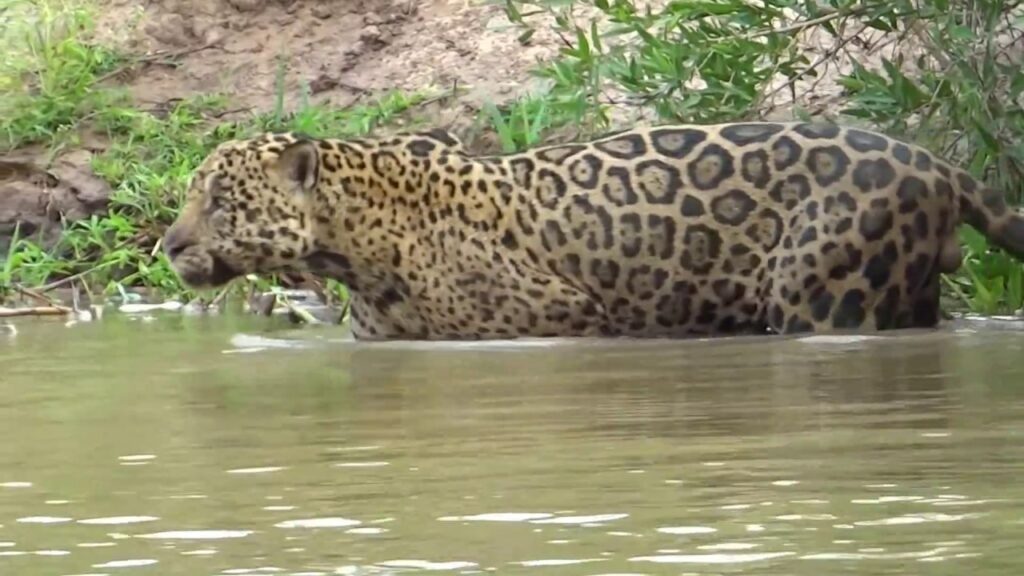
You can’t talk about capybara predators without making mention of the jaguar. The jaguar is one of the most dangerous predators in the wild.
These large cats are feared by several animals and even humans. Their large size and excellent hunting skills make them terrifying beasts. They have powerful jaws and sharp claws that can dismember the parts of their prey.
One of the most common prey of the jaguar is the capybara. Capybaras tend to come out from their corners to graze during the early hours of the day or at night. These rodents love cool temperatures and they spend most of their time in water bodies to relax and cool their body temperature.
Jaguars have excellent night vision, allowing them to hunt in the dark. Moreover, their fur gives them excellent camouflage, so they can hunt undetected. Like most big cats, jaguars would stalk their prey before making their move.

Capybaras are smart and vigilant, they pay attention to their environment but most times, they can’t escape big cats like jaguars. They are easy targets for jaguars, who lurk around in the bushes, waiting for the perfect time to strike.
The Jaguars deliver their strike with precision. Once they catch a capybara, they will drag the rodent away from the water to dry ground, where they can kill it and eat it in peace.
5. Puma

Pumas are one of the most excellent hunters in the wild. They are predominant in South and North America. These big cats with muscular legs that help them run fast, helping them capture potential meals.
Pumas, also called South American cougars or mountain lions, have short, brownish-red fur. These cats are great climbers, they have great vision, which helps them source potential prey.
When they sight a prey, they will stalk until they are close enough to kill the animal. When attacking their prey, they use their powerful hind legs to jump on the animal and launch a fatal bite in its vulnerable area, which is mostly the neck or throat area.
Pumas do not consume the entire animal at a go. When they have eaten to their satisfaction, they drag the remains of their prey with their powerful jaws to a safe spot, where they can eat it later.
Pumas weigh 100 to 200 pounds, are incredibly powerful, and can leap up to 15 feet high. Their diet consists of plants and animals. Pumas typically prey on deer, fish, birds, rabbits, and rodents. In the absence of deer, a puma would eat rodents like capybaras.
6. Crab-Eating Fox

Crab-eating foxes are found in many South American countries, including Argentina, Brazil, and Uruguay. As their name implies, these foxes delight in eating crabs, crayfish, plants, fishes, and other small invertebrates.
Their favorite food, which is crabs is common in the wet season. During the dry season when their favorite food gets scarce, crab-eating foxes look out for other sources of food such as rodents.
A crab-eating fox wouldn’t attempt to hunt or take down a full-size, adult capybara. Rather, they target smaller, young ones. They hunt alone or in pairs and they use their sharp claws and teeth to kill their victims.
After killing their prey, they would drag the carcass of the animal to a safe area, where they can peacefully eat it without interference from other animals.
7. Harpy Eagle
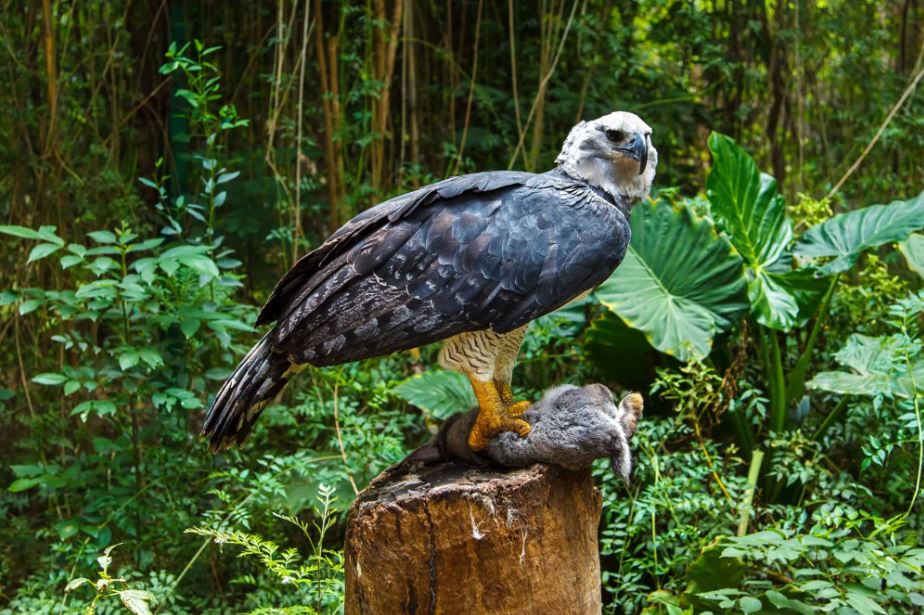
Harpy eagles are one of the most powerful birds in the world. They are excellent hunters and can prey on animals as large as monkeys and sloths. They can be found in South America, which is where capybaras come from.
This bird has an intimidating size with a wingspan that spans over six feet. Harpy eagles can lift animals that weigh more than four times their own body weight.
Harpy eagles hunt and attack young capybaras in the wild. Perhaps, they do not target large capybaars due to their huge weight. They would perch on a tree, cliff, or any high surface looking around grasslands, rivers, and ponds for their next meal. They have great vision, which helps them see their prey from a distance.
When they see a potential prey, they dive down at top speeds and lift the animal off the ground. Harpy eagles hunt capybaras around slow-moving ponds and pools. When they see a baby or young capybara, they dive down and snatch it from its parent, and may sometimes stifle the animal to death with their sharp talons and powerful grip.
After capturing the animal, they take it to their nest, where they feed it to their young ones.
8. Humans
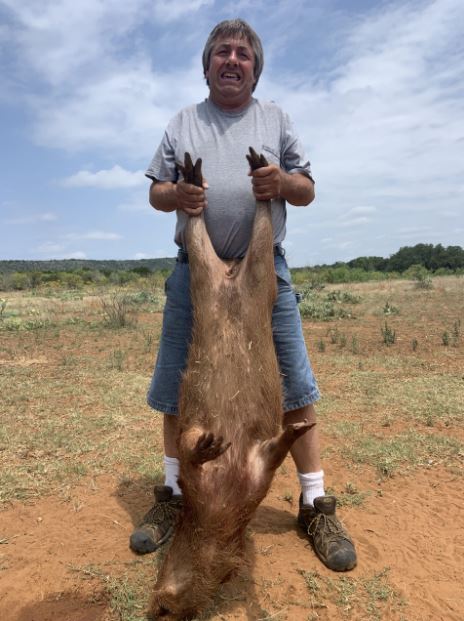
While the most threatening capybara predators are in the wild, the greatest of them all, which isn’t often talked about are humans. Capybaras in the wild have been hunted by humans for several centuries.
By nature, capybaras are friendly, calm, and docile. Their large size makes them a big kill for any hunter, whether human or animal.
Capybara meat is eaten in several South American countries. Some claim the meat tastes like fish while others say it tastes like pork. Capybara meat is served in most events and festivals in South America, especially in Venezuela, where it is eaten during Lent.
While capybaras are consumed by humans for food, their pelt, hide, and skin are used in making belts, bags, clothing, and other items.
Although capybaras are not endangered or extinct, their overall population is stable and intact but if humans continue killing the rodent, it may get extinct quickly.
There are regions in South America where capybaras have mysteriously disappeared due to poaching and overhunting. Capybaras are farmed and domesticated for meat in many communities in South America.
How Do Capybaras Defend Themselves?
While capybaras are not aggressive animals, they can defend themselves when necessary. These animals come from South America and live in forests with close access to fresh vegetation and water bodies such as lakes, rivers, ponds, streams, etc.
They are targeted by several carnivorous animals who occupy the same habitat as them. The life expectancy of a capybara is between 8 to 12 years. Most capybaras do not live up to six years due to the threats and troubles they face in the wild.
Sadly, baby capybaras are the most vulnerable, and many of them never make it to adulthood due to predation. Capybaras live in groups or herds made up of 10 to 30 members, and sometimes the number can be as high as 100.
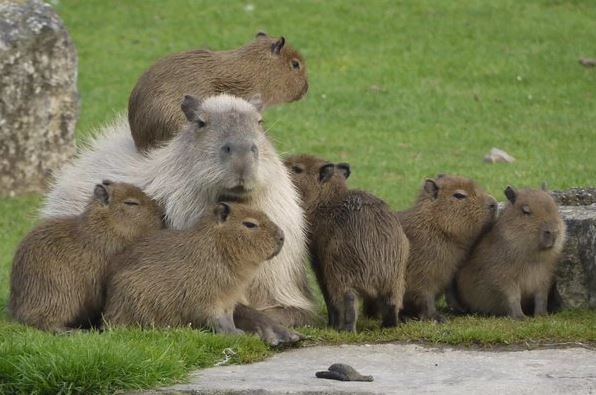
Each herd consists of adult males, females, and young capybaras. The adult male capybaras are the defenders of the herd, they are vigilant pay attention to the environment, and will alert the rest of the group when they sense danger.
In such situations, they bark or make all manner of sounds to communicate with the rest of the group and warn them of the incoming danger. Capybaras have strong feet and hands for running and climbing trees. When threatened by predators, the group will run to any pool of water nearby and hide in it until the area is safe.
Capybaras can stay underwater for over five minutes. This ability gives them an edge over the predators as they get under the water’s surface until the threat is gone. While most of their predators are terrestrial animals, they do have predators in water as well.
Conclusion
Alligators do not eat capybaras for many reasons. The capybara is a large animal, which is too big for alligators to swallow. Even if alligators want to eat small pieces of the capybara, they would find it challenging to bite off the small legs and hands of the rodent.
When next you see a capybara close to an alligator, you probably know why they are at peace with each other. Although alligators and crocodiles do not attack capybaras, caimans will kill and eat them.


![Capybara Meat And Its Culinary Uses - [Every You Should Know] Capybara Meat & Culinary Uses](https://capybaratips.com/wp-content/uploads/2023/03/Capybara-meat-250x200.webp)
